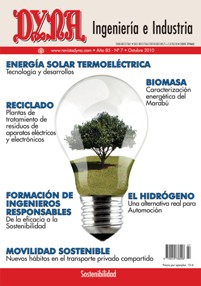NEW METHOD FOR THE OPTIMIZED DESIGN OF SEMI-AUTOMATED WORKCELLS FOR WEEE RECYCLING: TV AND MONITORS CASE.
Keywords:
sector, optimización, simulación, desensamblado, reciclado, reutilizaciónAbstract
Waste coming from electric and electronic appliances is an increasing environmental problem. Their present recycling and reuse ratio are far from the targets defined in the European Directive for “Waste from Electrical and Electronic Equipment”, WEEE, which tries to reduce the waste going to landfills. This research proposes a new method for selection and design of automated and semi-automated operations of a recycling plant for electronic appliances. An improved recycling of the obtained materials is expected, with a more pro? table process for small or medium enterprises. An example of its applicability is proposed, focused on the separation of the materials of TVs and monitors. Because of the difficult reuse of glass coming from the cathode ray tubes, a specific solution is proposed. Economic, legal and technical issues concerning the level of the automation applied to a recycling line are studied, covering from the full automation of all the disassembling tasks, to a manual dismantling. This know-how is used by the proposed method as the input to a decision support system for optimization purposes. The parameters used by this system are: previous expertise of recycling companies, WEEE regulations and economic aspects (materials pricing, recycling costs, etc.). The simulation of the solution has been analyzed, with an economical assessment of the recycling process, to show the feasibility of the method. Finally the work is complemented with a real setting up of the proposed design in a recycling company, and with a new application of the obtained glass in a secondary market related to constructionDownloads
Published
2010-10-14
Issue
Section
ARTICULOS

